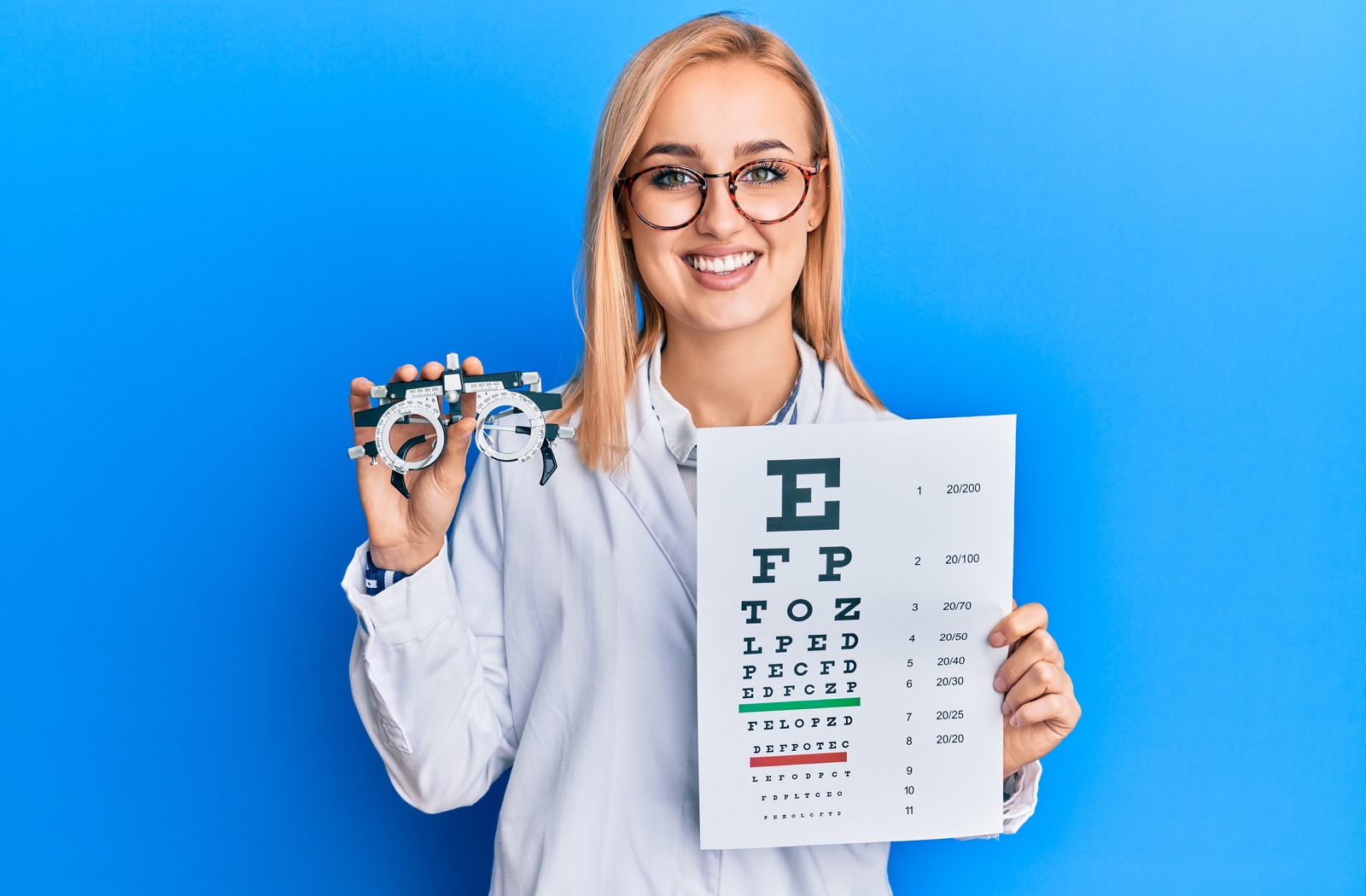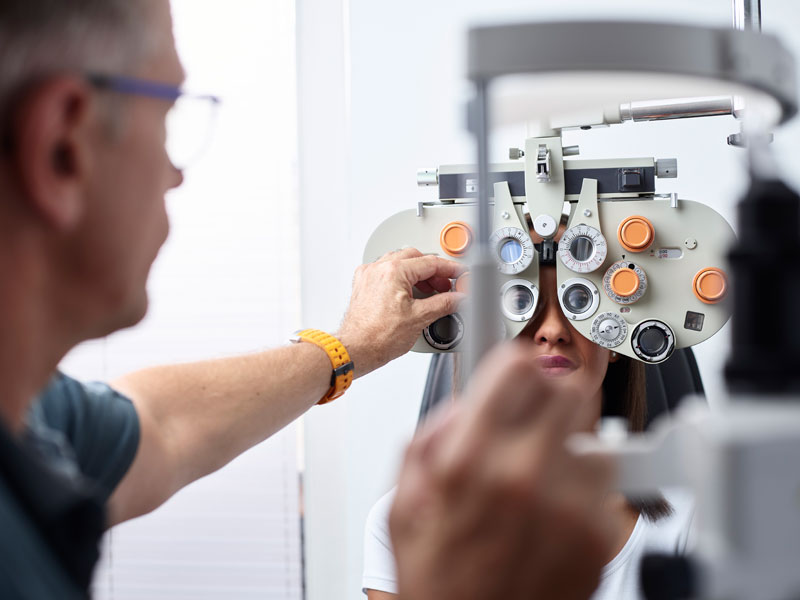Explore Advanced Providers at Opticore Optometry for Eye Health
Explore Advanced Providers at Opticore Optometry for Eye Health
Blog Article
Exploring the most up to date Technical Improvements in Optometry and What They Mean for Eye Doctors
From the precision of Optical Coherence Tomography to the nuanced understandings used by AI-driven diagnostic devices, these technologies are establishing brand-new standards in client assessment and treatment. As these advancements penetrate the method, optometrists are faced with the challenge of embracing these devices to boost client results.
Advancements in Diagnostic Tools
Advancing the area of optometry, technologies in diagnostic tools have actually transformed the means eye treatment specialists evaluate and detect ocular problems and aesthetic problems. The past years has witnessed considerable technical developments, enabling more exact and extensive analyses.
Another key technology is the intro of sophisticated corneal topography systems, which map the surface area curvature of the cornea with accuracy. These tools are particularly helpful for fitting call lenses and identifying corneal problems. Additionally, digital retinal imaging has actually changed traditional ophthalmoscopy, using comprehensive, breathtaking sights of the retina that promote detailed aesthetic exams.
The growth of wavefront aberrometry has actually also been crucial, allowing the evaluation of refractive errors with unparalleled precision (Eye Doctor). This innovation aids in personalizing restorative lenses and enhancing surgical end results for refractive surgeries. Collectively, these diagnostic improvements encourage eye doctors to provide premium individual care, ensuring early treatment and customized therapy methods, eventually improving visual health and wellness end results
AI in Patient Monitoring
Building on the structure of innovative analysis tools, the unification of expert system (AI) in client monitoring stands for a transformative leap for optometry. AI systems are progressively used to boost efficiency, accuracy, and personalization in client treatment. By analyzing large amounts of information, AI can recognize patterns and predict potential ocular conditions, enabling optometrists to customize interventions better. This capability is essential in taking care of persistent eye diseases such as glaucoma and diabetic person retinopathy, where early discovery and continuous monitoring are essential.
In addition, AI-driven platforms promote streamlined client interactions and management procedures. Automated organizing, digital consultations, and customized follow-up plans not only improve person fulfillment but also enhance time monitoring for practitioners. These systems can triage individuals based on the necessity of their problems, making certain that those in vital need receive prompt interest.
In addition, AI boosts decision-making by giving eye doctors with evidence-based suggestions and treatment pathways. By integrating information from digital health documents, AI devices provide understandings that educate professional decisions, minimizing the threat of mistakes and boosting person end results. As AI remains to progress, its duty in client management will likely increase, improving the landscape of optometric treatment.
Advancements in Retinal Imaging
In the world of optometry, retinal imaging has actually witnessed impressive technical innovations that are improving diagnostic capabilities and patient care. Technologies such as Optical Comprehensibility Tomography (OCT) and fundus digital photography have transformed just how eye doctors examine the retina and visualize.
Improved imaging modalities like OCT angiography are more refining analysis accuracy. Eye Doctor. Such weblink innovations help with the identification of min retinal adjustments that could represent condition progression.
Furthermore, innovations in artificial intelligence are augmenting retinal imaging by making it possible for computerized evaluation of large datasets. These systems help eye doctors in recognizing patterns indicative of pathology, therefore enhancing analysis precision and efficiency. Collectively, these innovations are transforming retinal imaging into a foundation of modern eye care, boosting end results and expanding therapeutic opportunities.
Teleoptometry's Expanding Role
Teleoptometry is increasingly ending up being a crucial element of eye care, driven by improvements in digital interaction and diagnostic devices. This is especially helpful in underserved and country areas where access to specialized eye care is typically minimal.
The integration of synthetic knowledge (AI) additional enhances teleoptometry, allowing the evaluation of visual information and aiding in the discovery of ocular conditions such as glaucoma and diabetic retinopathy. AI-powered formulas can quickly analyze complicated imaging information, offering optometrists with valuable insights that boost medical decision-making.
In addition, teleoptometry sustains connection of care with smooth integration with digital health documents (EHRs), permitting optometrists to keep detailed patient backgrounds. When seeking advice from with different professionals., this guarantees that individuals receive personalized and regular care even.
Regardless of these benefits, difficulties stay, consisting of making certain data safety and security and taking care of client expectations. However, teleoptometry represents a substantial stride towards more obtainable, reliable, and patient-centered eye treatment. As technology progresses, its duty is poised to increase additionally.

Future Fads in Eye Care
A myriad of ingenious trends is readied to reshape the future of eye care, driven by technical developments and the evolving needs of clients. One considerable pattern is the assimilation of artificial knowledge (AI) in diagnostics, which promises to boost the accuracy and efficiency of eye exams. AI algorithms can assess vast quantities of data from retinal photos, possibly spotting problems like diabetic retinopathy and glaucoma earlier than typical methods.
In addition, personalized medication is acquiring grip in optometry, with genetic testing informing customized therapy strategies. This approach aims to optimize patient end results by customizing treatments to individual genetic accounts. Wearable innovation, such as wise contact lenses, is additionally coming up, offering real-time monitoring of intraocular pressure or glucose degrees, thus giving continual understandings right into systemic and eye wellness.
The fostering of enhanced reality (AR) and virtual reality (VR) in training and person education and learning is an additional arising pattern. These modern technologies provide immersive experiences that can improve understanding and abilities both for optometrists and patients. As these patterns you can try these out progress, optometrists need to stay abreast of technological advancements to provide sophisticated care, making sure improved patient results and contentment in the dynamic landscape of eye care.
Verdict

Jointly, these diagnostic innovations empower eye doctors to provide premium patient care, guaranteeing early intervention and customized treatment techniques, inevitably improving visual health and wellness results.

As these modern technologies proceed to evolve, optometrists must adjust and incorporate them into practice, eventually optimizing operations efficiency and elevating the standard of eye treatment supplied to clients.
Report this page